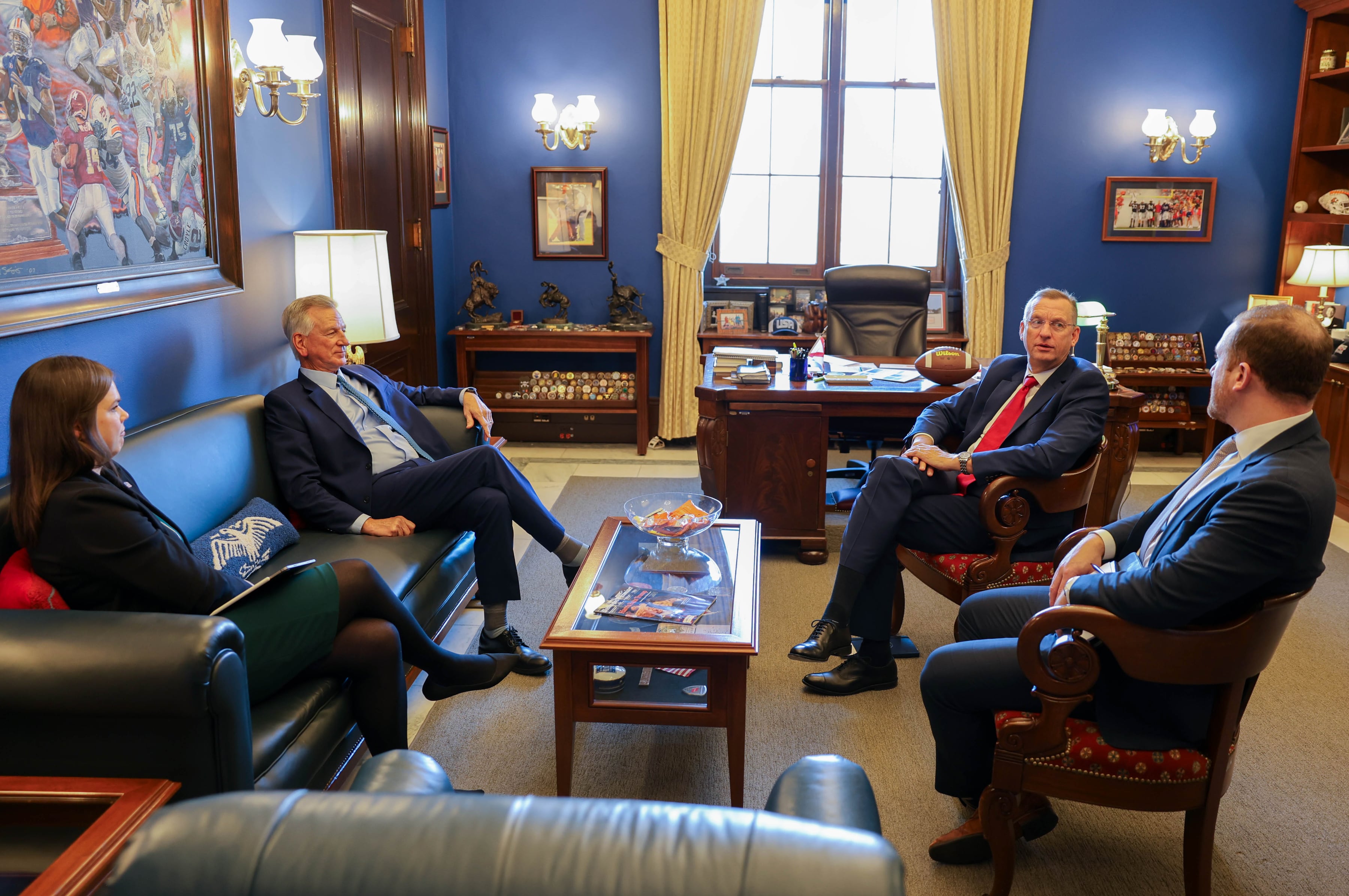"Take the advantage you have on the land and project it into the air," said Royal Air Force Wing Commander Andy Massie. "There are benefits in each domain that can be leveraged against another."
Massie said sStrategists can’t think of the air domain in a vacuum, or of and air superiority coming solely from aircraft. Instead, air superiority must be viewed as must incorporateing advantages from land, sea, cyber and space forces as well, he said.
"Air superiority is something that's practiced across domains," he said. "The domains don't exist on their own, they overlap. The contest of that domain happens both within that domain and across the domains."
Speaking at an event hosted Tuesday by the Air Force Association’s Mitchell Institute for Aerospace Studies, Massie said officers need to make sure they are incorporating all available resources to obtain air superiority, for example, including cyber assets like advanced networking, space surveillance assets such as surveillance, and ground- and sea-based anti-aircraft missile systems.
And eEven those who fly in the clouds should keep an eye on the ground, Massie said. The land component is the biggest piece in any conflict, simply because "we live on land."
Projecting ground-based power into the skies is a lesson, he noted, that U.S. adversaries are increasingly taking to heart.
Near-peear adversaries may not have aircraft that can keep up with U.S. and allied planes, so they meaning the adversaries won’t be able to control the airspace, Massie said. But they are increasingly using electronic warfare and anti-aircraft missiles to deny the U.S. access to their own airspace.
"Your adversaries are looking for a chink in the armor that they can exploit," he said.
Since the fall of the Berlin Wall in 1989, the Air Force has largely been unchallenged in the air domain. With the focus more recently on Middle Eastern non-state actors like terrorist groups, the service has focused less on air superiority of the air and more on how air power can benefit ground missions, Massie said.
But that focus came with a price; things like air superiority fighters and aircraft maintenance were put on the back-burner.
"Those sorts of capabilities were sacrificed to deliver capability in the land campaign. It was exactly the right thing to do in the strategic environment facing the United States," Massie said.
But he argued that it’s time for the pendulum to swing back the other way. With Russia, China, and North Korea all attempting to develop advanced systems to deny aerial access, the U.S. must focus again on maintaining keeping air superiority.
"Our adversaries have recognized that you can't control that domain, but you can deny it," Massie said.
The catch: swinging the focus back to air superiority means that Air Force support for ground missions might suffer.
"There is no right answer, there are just better wrong answers," Massie said.
Maj. Gen. Jeff Newell, the Air Force director of strategy, concepts, and assessments, said current Air Force top brass has "uniquely been part of a generation that has not known a contested environment."
"In the future, we have to prepare to have every step of the kill chain challenged," he said.
The necessity of multi-domain operations means troops need to be well-versed in many different fields.
"You can't just produce air warriors and cyber warriors," Newell said. "You've got to produce airmen who are proficient in both."
The Air Force has to deal with the fact that it doesn't have uncontested control of the skies anymore, he said.
"No military advantage is lasting against a thinking adversary. They are evolving and we must evolve, too," Newell said. "Technology has enabled our adversaries to challenge our power projection model of warfare. They have expanded the point of contest from over their own territory into all domains and around the globe."





